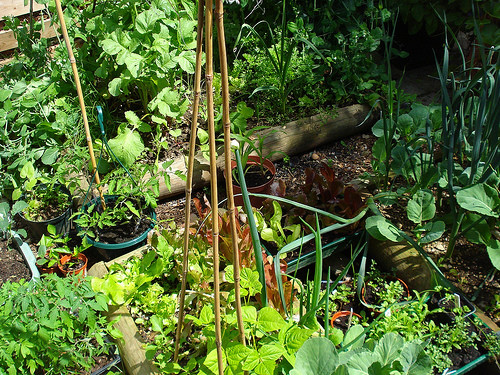Garden Planning 2013: With Spring Around The Corner, Planting Apps Will Help Yield A Bountiful Harvest

Springtime might seem far away, but it’s not too early to begin planning your garden!
Whether you’ve got just a window box or a full backyard, the first step to make the best use of your space is to plot out your herbs, vegetables, and flowers on plain old paper. Or, for the technophiles, you can use an application such as Garden Plan Pro, available at the Apple Inc. (NASDAQ:AAPL) App Store, to make sure your asparagus doesn’t crowd your azaleas.
If you have a room with enough light in it, especially with a well-placed windowsill, you may be able to start some of your seeds indoors -- a much cheaper option than buying plants at a garden center. It also will enable you to turn out fruits and vegetables a bit earlier than if you planted seeds outside. It’s the same drill as growing plants outside: You’ll need a container with soil, water, and, of course, seeds.
As with planting seedlings outside, timing can vary based on your regional climate, with the primary variables being the expected last frost date for your area, and the type of plant you’re growing.
For instance, the Cornell University’s extension program in New York's Suffolk County recommends that Long Islanders start broccoli seeds indoors in March, and then transplant them outside any time between early April and early September. If you’re starting broccoli outside, though, it’s best to plant between mid-April and late July.
Planting times will vary by your particular area, so you may want to search for a local guide tethered to your regional climate. Usually a nearby university, especially one with an agricultural-sciences department, will have a guide available. You can also use apps such as When To Plant (also available at Apple's App Store), which uses your ZIP code to calculate the best range of times for starting seeds indoors, transplanting them, or planting them outdoors, as well as when to harvest your crops.
Planting flowers alongside fruits and vegetables can help attract pollinators like bees. For best results, most horticulturalists recommend using native flowers. If you’re aiming to draw butterflies to your plants, there are certain plants that are reliable favorites: marigold, lilac, and, unsurprisingly, butterfly bush, to name a few.
One unconventional option for growing tomatoes is to use an upside-down planter, as suggested by the New York Times. Such a container, which can be either purchased or made from an ordinary wash bucket, saves space -- and adherents claim the arrangement helps foil both pests and weeds. Other plants that can be grown topsy-turvy fashion are cucumbers and peppers, although any variety that gets too large may soon weigh too heavily on the vine. Horticulturalists still aren’t sure if this trend is just a fad, though.
Another gardening design that’s currently en vogue is the vertical garden, which is a great way to make use of wall space. Vertical planting beds can be made out of lots of different things: fabric pockets or specially designed trays, as noted by Country Living, or repurposed wooden pallets, as pointed out by Life on the Balcony.
You may not even have to buy seeds for some of your garden plants -- there are several vegetables that can be regrown from kitchen scraps. Leftover ginger root can be planted directly into soil, while if you put the bottom scraps from celery, green onions, leeks, or scallions into water, they should start to sprout and can be replanted in potting soil.
Good luck, and happy planting!
© Copyright IBTimes 2024. All rights reserved.





















